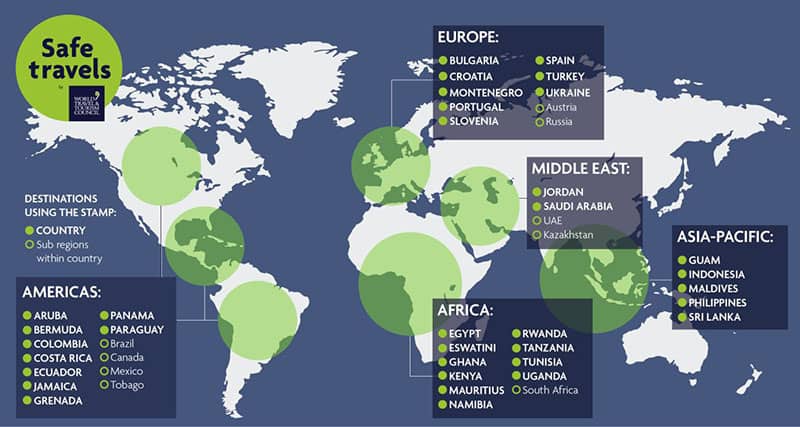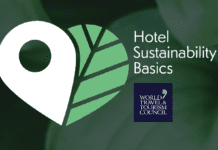 The World Travel & Tourism Council (WTTC) has announced that in just three short months, 100 destinations are now using its ‘Safe Travels’ stamp, with the Philippines becoming an official safe destination.
The World Travel & Tourism Council (WTTC) has announced that in just three short months, 100 destinations are now using its ‘Safe Travels’ stamp, with the Philippines becoming an official safe destination.
WTTC, which represents the global Travel & Tourism private sector, made history earlier this year when it launched the world’s first ever global safety and hygiene stamp, and today the Safe Travels stamp reached its first major milestone with the 100 safe destinations being designated.
The stamp was developed to help restore confidence and enables travelers to recognize destinations around the world that have adopted health and hygiene global standardized protocols.
This landmark move by WTTC also received the backing of the United Nations World Tourism Organization (UNWTO).
The launch of global protocols to recover the Travel & Tourism sector have been embraced by over 200 CEO’s including some of the world’s major tourism groups.
Gloria Guevara, WTTC president & CEO, says in press materials, “We are delighted to see our innovative initiative is proving such a great success and is being used by destinations from all corners of the globe.
Safe Destinations
“The 100 destinations, which now proudly use the stamp are working together to help rebuild consumer confidence worldwide. We welcome the Philippines, an incredible destination and home to some of the world’s most beautiful islands, as our 100th destination, as well as other popular destinations around the globe such as Turkey, Egypt, Indonesia and Kenya,” Gloria Guevara, WTTC president & CEO, said in a statement.“As the stamp continues to gain in popularity, travelers will more easily be able to recognize the destinations worldwide which have adopted the new set of global protocols, encouraging the return of ‘Safe Travels’ around the world.”
The widespread adoption of the stamp demonstrates that WTTC and all its members from around the world have the safety and hygiene of travelers as their top priority. The protocols follow guidelines from the World Health Organization (WHO) and the Center for Disease Control and Prevention (CDC), as well as considering best practices from WTTC’s members.
Evidence from WTTC’s Crisis Readiness report, which looked at 90 different types of crises in the last 20 years, highlights the importance of public-private cooperation and the implementation of standardized protocols.










